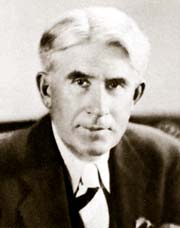
Zanesville
Ebenezer Zane founded Zanesville in 1800. The village was located at the junction of the Licking River with the Muskingum River. Zane had built a ferry service at this place for people traveling along the frontier road known as Zane's Trace. By the War of 1812, the town had approximately 1,400 people. It became the Muskingum County seat in 1804.
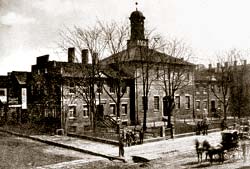
In 1810, Zanesville replaced Chillicothe as Ohio's capital city. The main reason for this change was an attempt by Democratic-Republicans in Ohio to solidify their control over eastern Ohio. The capital remained in Zanesville for two years and returned to Chillicothe in 1812. A new state capital was established in Columbus in 1812.

Putnam Historic District
Putnam is one of the oldest settlements in the state of Ohio, established around 1800 and was annexed into Zanesville in 1872. The town's residents and institutions played an important role in the Underground Railroad and in Ohio's debate about the abolition of slavery. Putnam was home to prominent abolitionists as well as the location of two conventions of the Ohio Abolition Society. The Putnam Historic District is roughly bounded by Muskingum Ave., Van Buren St., and the Penn-Central Railroad.
Pottery Center
Zanesville's most important industry during the second half of the nineteenth century was the manufacturing of art pottery. Samuel A. Weller became the areas most important manufacturers. By 1905, more than five hundred workers were employed in Weller's plant. These workers produced three boxcars full of pottery every day and made Weller the largest manufacturer of pottery in the world by the 1910s.
The Muskingum River valley has provided clay for pottery for 100s of years. The ceramics industry reached its height in the early 20th Century. Manufacturers such as Roseville, Shawnee, Hull, McCoy and Well were extremely popular and today, these pieces are highly collectile.
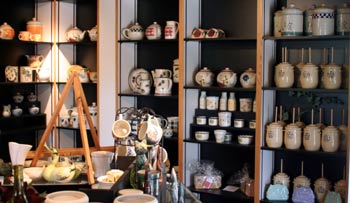
The National Ceramic Museum and Heritage Center in Crooksville, located just beyond the Muskingum County line, contains exhibits devoted to the history of pottery in easter Ohio.

The Famous "Y" Bridge
Along the National Road is the famous "Y" Bridge in Zanesville and is one of Zanesville's most famous landmarks. This bridge is still in use today, although it has gone through five versions since it was first built in the early 1800s. The Y Bridge crosses 2 rivers: Muskingum and Licking Rivers.
The current bridge replicates the 1902 bridge that was badly damaged during the Ohio flood of 1913. Follow the markers for a wonderful view of the bridge and Zanesville from an overlook park.
Zanesville Underground Railroad Connection
Prior to the Civil War, Zanesville and Putnam were two communities separated by the Muskingum River with each community having two completely different moral views on the issue of slavery. Zanesville residents were decidedly pro-slavery and Putnam residents were anti-slavery. In Putnam, many residents took part in the migration of fleeing slaves on the Underground Railroad. Several former slaves settled down in Putnam, and one slave, Nelson T. Gant, became a millionaire.
Zanesville Welcome Center
The Zanesville Welcome Center, located at 205 N. Fifth Street, has a great selection of pamphlets and brochures about local attractions as well as friendly and helpful people willing to answer virtually any question you have about Zanesville.
Historical Sites in the area

Dr. Increase Mathews House Museum
304 Woodlawn Avenue
Zanesville, OH 43701
(
740) 454-9500
The Dr. Increase Mathews House is the oldest house in Zanesville. Built in 1805 and located in the Putnam Historic District, the Museum has a gift shop featuring various items, historic room settings, and many other various types of antiques. The house is also the home of the Pioneer & Historical Society of Muskingum County, founded in 1890.
Admission: $2 per person

Stone Academy
115 Jefferson Street
Zanesville, Ohio 43701
(740) 454-9500
The Stone House was built in 1809 to lure the state capitol away from Chillicothe. When Zanesville was chosen as the state capital, the building was used for public functions and as a school house, but not the capitol building. The Stone House features exhibits of local historic documents, period clothing, fine art, furniture and special exhibits. The Stone Academy held two meetings of the Ohio Abolition Society.
Noted abolitionist Theodore D. Weld was speaking at the Stone Academy in preparation for the first of these conventions when a mob of anti-abolition residents of neighboring Zanesville broke up the meeting. The Stone Academy was attacked again during the 1839 convention, and 200 anti-abolitionists intending to burn all of Putnam were met by 70 Putnam residents at the entrance to their community. Further violence was averted by the arrest of some of the instigators.
Putnam Underground Railroad Education Center
522 Woodlawn Avenue
Zanesville, Ohio
The Putnam Underground Railroad Education Center opened to the public in 2004 in a single family residence built in the 1830s. The educational center and museum features artifacts from Africa, Civil War era artifacts, an extensive library on the Underground Railroad and the Abolitionist movement.
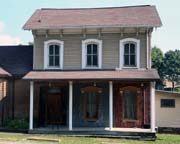
Nelson T. Gant House
1845 West Main Street
Zanesville, Ohio
Nelson Gant was one of Zanesville's most prominent African Americans. Born into slavery in 1821, Gant was granted his freedom through the execution of John Nixon's will, his owner. Gant was not only given his freedom, but also provided some money for resettlement. Although he remained in Virginia for a number of years trying to purchase his wife. When those initial efforts failed, Gant moved to Zanesville where a number of freed slaves lived. Gant became active in the Underground Railroad and helped many former slaves. Still trying to gain the freedom of his wife, Gant returned to Virginia and was arrested. Eventually, through the help of local Quakers, Gant and his wife Maria gained their freedom and both returned to Zanesville. Gant became an innovative farmer and successful businessman, owned a coal mine and became a leader in the African Methodist Episcopal Church.
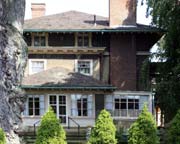
The Schultz Mansion
441 Putnam Avenue
Zanesville, Ohio 43701
(740) 453-8828
This restored mansion was built in 1900 by William D. Schultz and given as a wedding gift to his bride, Ethel Granger Schultz. Consists of 26 rooms, five baths and eight fireplaces. Walled garden encloses the beautifully landscaped grounds and a spacious carriage house is nestled in the rear, complete with groomsman quarters. Perfect setting for meetings, parties, banquets and tours.
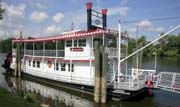
Lorena Sternwheeler
Docked at Zane's Landing Park at the west end of Market Street is the 104' Lorena Sternwheeler that takes excursions up and down the Muskingum River. The nostalgic riverboat offers special dinner cruises, lunch cruises and twilight cruises as well as public rides periodically throughout the warmer months. Check for times, dates and costs by calling 800-246-6303.
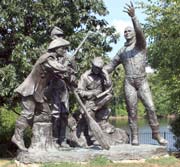
Zane's Landing Park
A small park along the east bank of the Muskingum River is home to the Lorena Sternwheeler. More notable is the Eternal Flame dedicated to Medal of Honor recipients across the country. There are several memorials in the park, the most noticeable one is the statue that pays tribute to the 4 people who were most important in Zanesville's rich history: John McIntire, Noah Norris, Zane Grey and John Glenn.
-
John McIntire: son-in-law of Ebenezer Zane (the founder of Zanesville) and the visionary for the town's development
-
Noah Norris: enlisted in the first black regiment recruited in Ohio to fight in the Civil War
-
Zane Grey: author and grandson of Ebenezer Zane
-
John Glenn, Jr: astronaut and first American to orbit the earth as well as a 4-term senator from Ohio.

The National Road-Zane Grey Museum
8850 East Pike
Norwich,
Ohio 43767
(740) 872-3143
(800) 752-2602
This is the only museum along the entire National Road constructed as a depository of information about the road. The museum also features Zane Grey, the famous Zanesville western story writer. Also included in the museum is an exhibit of the Zanesville pottery industry.

John and Annie Glenn Historic Site
77 West Main Street
New Concord, Ohio 43762
Tours of the historic site include a 20-minute award-winning movie, narrated by Hugh Downs. Actors in costume greet you at the door and take you through the house as though it was 1944. The actors portray one of five different characters: John's father, his mother, a male or female college student who is renting a room from the Glenns or a teenage neighbor boy. In 1944, John Glenn is at war in the South Pacific. Displays include a 1/3 scale model of the Friendship 7 space capsule in which John Glenn took his historic flight in 1962, the jumpsuit he wore after he got out of the capsule, and some of his military uniforms.




